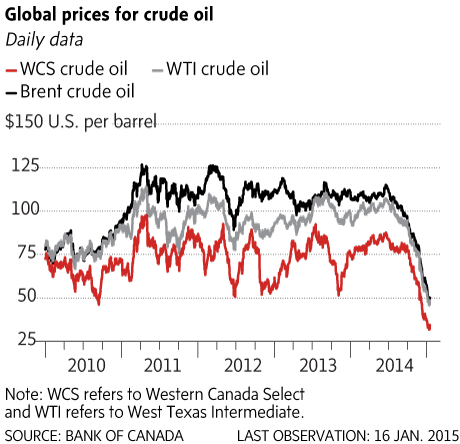Canadian junk bond market lifts off The Globe and Mail
Post on: 16 Апрель, 2015 No Comment

After two decades of inactivity, the Canadian junk bond market is roaring back to life.
Junk bonds — also known as speculative debt or high-yield bonds — are debt securities that are considered too risky to qualify as investment-grade holdings because of their relatively high probability of default. To compensate investors for the added risk, junk bonds pay much higher yields than government bonds or investment-grade corporate bonds.
For investors, those high yields are a tantalizing lure, especially at a time of low interest rates. Corporate borrowers also find junk bonds appealing: for many mid-sized companies, high-yield debt offers a way to raise capital on terms that compare favourably to bank loans.
But whether a junk bond market will emerge in Canada hinges on whether Canadian institutions will step forward to buy high-yield debt. While there are signs that demand for junk bonds is emerging, Canadian investors have shied away from the area for 20 years.
Before 2009 almost no speculative debt was issued in the Canada, said Ed Sustar, senior analyst and vice-president of Moody’s Investors Service in Toronto. The last Canadian junk bond market dried up around 1990 as institutions stopped buying high-yield debt because of concerns that they might be unable to resell the bonds and an inability to adequately diversify holdings.
You get equity-like returns with 40 per cent of the risk. Dan Bastasic, Mackenzie Sentinel Corporate Bond Fund
In the absence of a domestic junk bond market, below-investment grade Canadian companies have flocked to the well-established U.S. junk bond markets for funding. Canadian companies issued $10-billion (U.S.) of high-yield bonds south of the border during 2009.
Now some observers believe more Canadian issuers will stay home for their funding. Europe’s junk bond market took off 15 years ago and it has followed the U.S. trajectory, Mr. Sustar said. The hope is that Canadian [domestic]market will follow a similar trajectory.
Driving the market is public thirst for high-yield securities. As income trusts disappear and payoffs on conventional debt remain low, some investors are looking to junk bonds to satisfy their craving for steady streams of income. Canadian high-yield bonds pay from 3.8 percentage points to 6.8 percentage points more than risk-free government bonds, according to CIBC World Markets.
The problem is that a default wipes out any yield advantage — and the risk of a default rises quickly once a bond drops below what is considered investment grade. In Canada, the default rate among the lowest tier of investment-rated securities has been a mere 2.5 per cent. But one step below investment grade the default rate shoots up to 11 per cent, and below that it rises to 26 per cent.
The problem is the structure. The Canadian bond indentures are the worst in the world. John Carswell, Canso Investment Counsel
Despite the risks, there are now 60 buyers of high-yield securities in Canada, compared to six or seven buyers three years ago, said John Carswell, president of Canso Investment Counsel Ltd. of Toronto. Most of the new buyers are income-oriented mutual funds that are converting their income trust holdings to high-yield bonds.
As the appetite for junk bonds grows, the supply is growing as well. Many income trusts are converting into tax-paying corporations ahead of new tax rules that take effect in 2011. Several are restructuring their balance sheets by issuing junk bonds, said Steve Bavaria, managing director leverage finance for DBRS Ltd. the credit rating agency.
The real opportunity here is on the issuer side, Mr. Bavaria said. He believes many mid-sized companies that borrow $100-million or more from banks will be surprised to discover that borrowing through junk bonds can be cheaper than through bank loans.
But the risk antennae of investors should be on high alert.
Every four or five years, the underwriters talk about creating a high-yield market, but they never succeed, Mr. Carswell said. The problem is the structure. The Canadian bond indentures are the worst in the world.
Investor Education: Bonds
- How can I diversify the bonds I buy?
- How do strip bonds, index bonds, and real return bonds work?
- Related content How do bonds work?
- Related content What are savings bonds?
- Seven steps to buy stocks and bonds
The covenants — or contracts — under which the bonds are issued do not provide enough protection in case of insolvency or bankruptcy, he said.
The risks don’t deter Dan Bastasic, lead manager of the $1.3-billion (Canadian) Mackenzie Sentinel Corporate Bond Fund, one of the big players in Canada’s high-yield market.
He stresses that investing in high-yield bonds requires a careful analysis of corporate financial statements to reduce the risk of buying bonds from an issuer that will default. But the rewards can be substantial for careful investors. You get equity-like returns with 40 per cent of the risk, he said.
Other managers remain unconvinced. Unless you want to build a real large portfolio to offset or take away risk, the extra yield [available in junk bonds]is not worth it, said David Baskin, president of Baskin Financial Services Inc. A couple of mistakes can wipe away years of interest income, he said.














